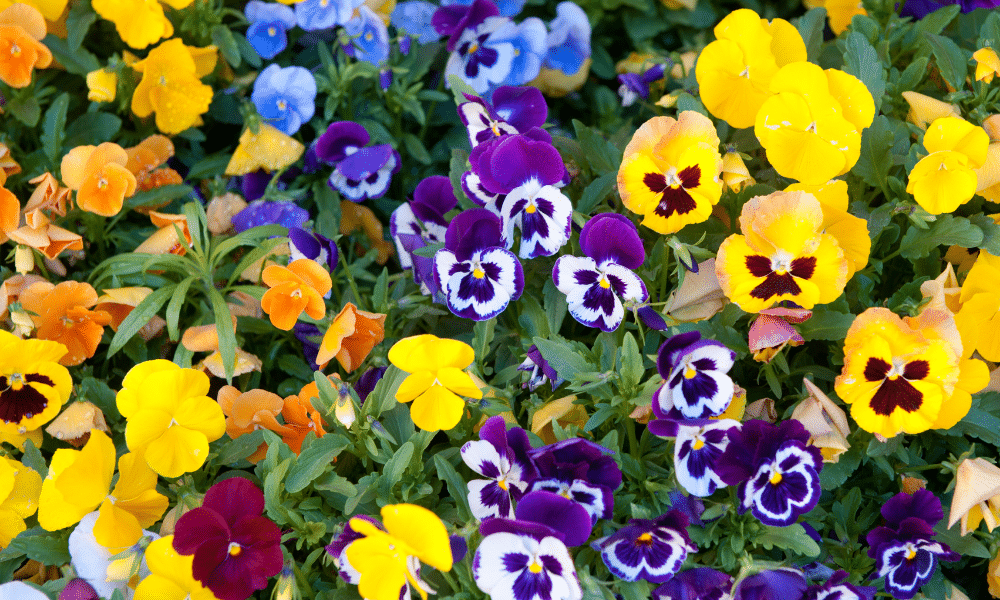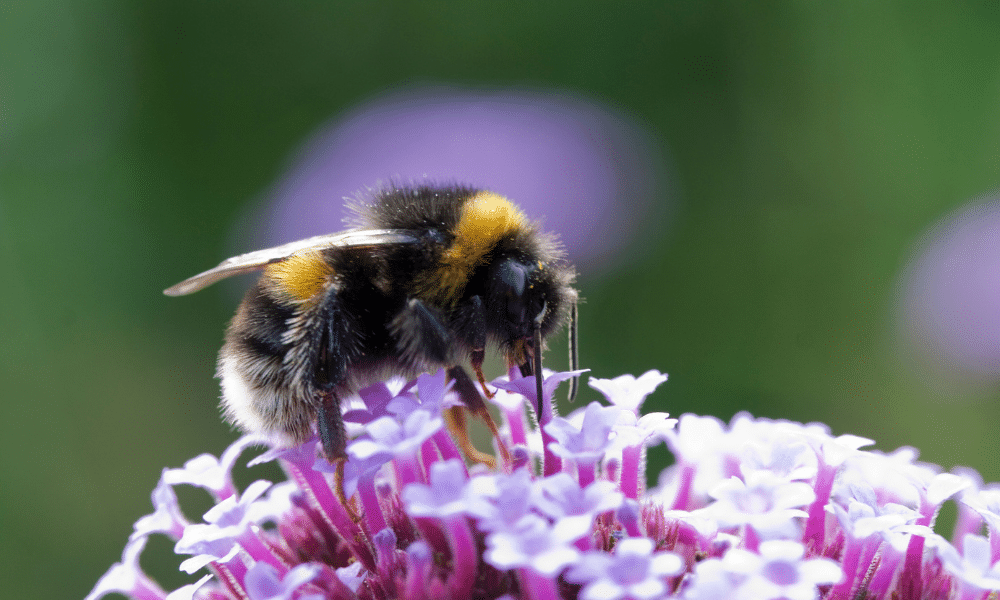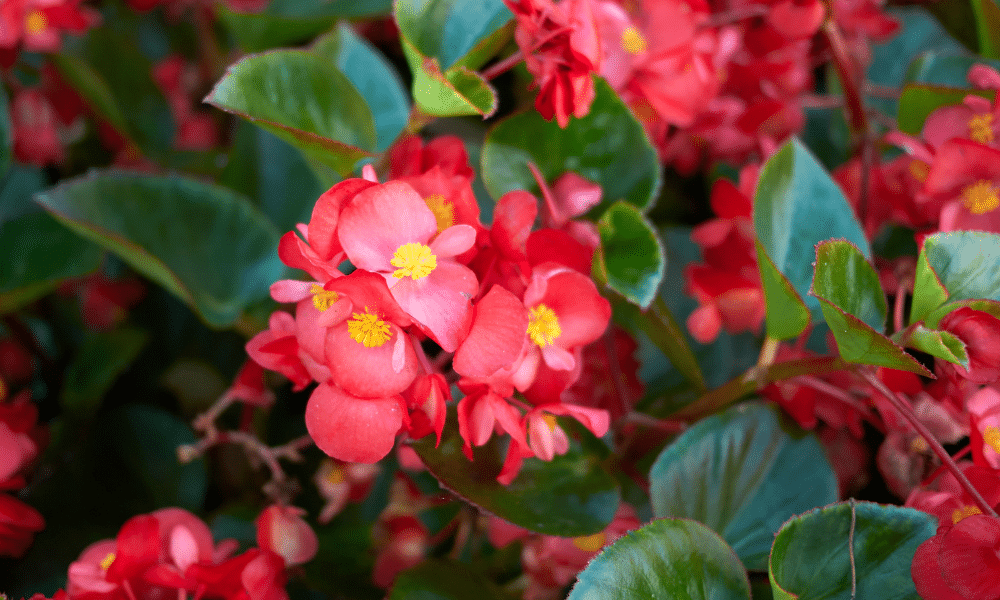Begonias are one of the most popular bedding plants for a traditional garden. They’re resilient, easy to grow and look pretty. But are they beneficial to nature? Do begonias attract bees?
No, begonias do not attract bees as they contain little-to-no nectar. Unfortunately, most traditional bedding plants do not provide any benefits to bees.
The sole reason that a bee is attracted to a flower or plant is that it is a source of nectar. Bees that you see buzzing around the garden have one job and that is to collect nectar, return it to their hive and then convert it into honey so that they can survive the winter months.
Why Don’t Begonias Attract Bees?
Bees like flowers in general, right? If it’s bright, pretty and colourful then you’ll bring bees into your garden. Unfortunately, this simply isn’t the case. Bees aren’t attracted to flowers for the same reasons we might be. Ultimately, they need nectar.
Begonias may contain some nectar but that nectar can be a challenge to access and low in quantity. This means a bee would need to visit an awful lot of begonia flower heads to collect a worthwhile level of nectar.
When compared to lavender or honeysuckle, there’s no point in a bee wasting its time foraging around on a begonia hunting out nectar when there are likely to be far easier plants to look through. Bees are on the clock, after all!
If you look at the flowers that bees are attracted to, they’ll have simple flower heads. This is because the nectar is easy to access. Bees can bounce between flowers quickly and efficiently if they can grab the nectar and then move on.
If you look at the flower heads of begonias, they are complex with lots of petals. This hides any nectar away from the bees who would have to dig deep to even find some.
Want to Attract Bees to Your Garden?
We’ve Put Together a Complete Guide to Attracting Bees to Your Garden Including Our Top 14 Plants You NEED to Have in Your Garden:
Are Begonias Bad for Bees?
Begonias might not be beneficial but does this mean they are bad for bees? Unfortunately, they can be because of their pesticide content. Many bedding plants are cultivated solely for the gardener who cares only about this appearance.
This means that many are sprayed with endless chemicals to ensure they flower reliably. Unfortunately, these pesticides are not always wildlife-friendly and they can easily leech into the surrounding soil and plants.
Fortunately, more and more people are becoming aware of how important their gardens are for wildlife and not just for themselves.
Do Other Bedding Plants Attract Bees?
Bedding plants have been developed to be aesthetically pleasing to gardeners – and not to wildlife. Unfortunately, this does mean many bedding plants popular in a traditional garden provide just one benefit: Their visual appeal.
Pansies, busy lizzies and geraniums (not cranesbill but pelargonium varieties) might be the go-to bedding plants for many, but they simply do not have nectar for bees that is of a sufficient quantity or easy to access.

However, there are some bedding plants you can opt for instead if you want pretty flowers that also do something positive for nature. Cosmos, marigolds, sunflowers and zinnias can all be used in place of traditional bedding plants.
What Should You Plant Instead of Begonias?
Dandelions, borage and ragwort might be mightily beneficial to bees but they’re not the most pleasing to look at… Ultimately, it’s hard to make them look like anything but weeds.
But are there beneficial flowers you can plant that are both attractive to bees whilst being attractive visually like begonias? Yes, there are!
Firstly, there are a few rules worth considering. Make sure you stick to single flowers and not double flowers. Double flowers might look great but they have so many petals that a bee struggles to get in to find the nectar.
The other tip to consider is that purple is a colour a bee can see most clearly. It’s why they love lavender so much! Bees will still be attracted to other colours – they still love marigolds after all.
In terms of specific plants to put into your garden instead of begonias, consider these:
- Crocus
- Forget-me-not
- Primrose
- Campanula
- Delphinium
- Foxglove
- Hardy Geranium (Not Pelargoniums)
- Teasel
- Verbascum
- Aster
- Buddleja
- Cornflower
- Scabious
- Verbena Bonariensis
Ultimately, you want a range of nectar-rich flowers of different shapes and sizes in order to attract a wide range of bees. There are over 4,000 types and 25,000 species of bees (source) in the world, after all!

FAQS
Do you have further questions about whether or not begonias attract bees? Then check these FAQs out:
Yes, begonias do produce a small amount of nectar. Unfortunately, the quantity is low and is also a challenge to access for bees which is why begonias are not a huge benefit to bees.
Unfortunately, begonias are not attractive to pollinators in general, including butterflies. Pollinators all visit plants to obtain nectar. If the nectar is lacking or tough to access, then a pollinator won’t bother with the plant.








We have a lot of waxed begonias and bumble bees LOVE them. Best to refresh your knowledge.
I live in Maryland and I plant begonias around the front and back of my house. Bees are always buzzing through those flowers.
For the past 3 years we have planted wax begonias in a shady area in the back yard in NJ. Hundreds of bumblebees visit them daily. Yard has lots of other options for them but they seem to love the begonias.
I don’t know what types of Begonias you refer to, but all of our Waxed Begonias draw a LOT of bumble bees here in South Carolina. It is now early October and they continue to love our begonias. You might consider editing your post.